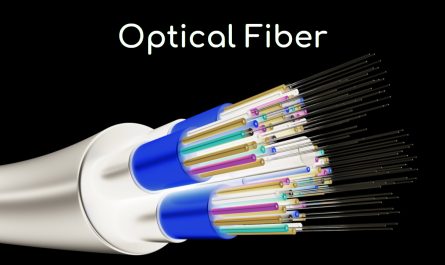
As data centers continue to grow exponentially to power our increasingly digital world, the strain on traditional air cooling technologies becomes more apparent. Skyrocketing energy consumption and carbon emissions point to an urgent need for novel, more efficient cooling solutions. Liquid immersion cooling has emerged as one of the most promising technologies to address these sustainability challenges and help data centers operate with greater efficiency.
What is Liquid Immersion Cooling?
Liquid immersion cooling involves submerging computing hardware such as servers, storage devices, and networking equipment in a tank filled with a non-conductive, dielectric coolant liquid. This liquid, usually a mineral oil, silicone or fluorocarbon-based fluid, has exceptional heat transfer properties. When electronic components are placed directly in the liquid bath, heat from processors, memory and other components is conducted rapidly and directly into the liquid. The liquid then transfers this heat to a secondary cooling system which could utilize air or water to reject the heat outdoors.
Direct contact between the equipment and coolant reduces thermal resistances compared to air cooling. This allows individual server nodes and entire racks of gear to operate at higher power densities while maintaining optimal component temperatures. Additionally, without airflow requirements vast amounts of energy consumed by fans, pumps and chillers in traditional HVAC systems can be saved.
Advantages of Liquid Immersion Cooling
Higher Power Density & Performance – By efficiently wicking away heat from chips and boards, liquid immersion enables exponentially higher computing power within the same physical space. This directly boosts overall data center capacity.
Energy Efficiency – With up to 90% less power needed for cooling versus air-based racks, data centers achieve massive PUE improvements. Estimates show liquid cooling saves 50-70% in annual energy costs.
Cost Savings – In addition to energy bills, liquid immersion drastically reduces upfront capital expenses on chilling plants and HVAC infrastructure. Ongoing operational savings are realized through decreased maintenance overhead as well.
Density & Scalability – Containment of mission-critical systems in self-contained submersion pods permits optimization of data center real estate. Blocks of racks can be easily added or removed as computing needs evolve.
Reliability – The passive, single-phase cooling avoids failure prone parts like fans, resulting in markedly higher equipment uptime over air cooling’s 99.74% average. Uptime Institute estimates immersion achieves over 99.999% availability.
Sustainability – By slashing energy consumption, liquid immersion affords data centers the ability to achieve carbon neutrality much more affordably. Coupled with renewable power sourcing, an entirely greener footprint is within reach.
Coolant Selection and Characteristics
Selecting the right liquid coolant is a critical factor for successful implementation of an immersion system. Aside from having optimal heat transfer capabilities, the coolant must also be non-toxic, non-flammable, and chemically stable. Common choices in use include:
Mineral Oil – Inert, low-cost hydrocarbon oil is proven but presents disposal challenges. High flash point makes it safer than other hydrocarbons.
Silicone Fluid – Synthetic polymer based, requiring no replacement over long lifecycles. Non-reactive and compatible with most materials. More expensive than hydrocarbons.
Fluorocarbon Fluid – Class of man-made fluorinated compounds offering best overall properties and stability. Has very high boiling points yet is fully drained and reused. Premium cost compared to other options.
Regardless of fluid selected, data center operators aim for coolants exhibiting low viscosity & coefficient of thermal expansion for optimal circulation around tight component clearances inside immersed enclosures. Chemical inertness preserves long equipment lifespan too. Proper fluid management practices are also critical for dependable, prolonged immersion system performance.
Real-World Liquid Immersion Deployments
While still an emerging technology, a growing number of large-scale commercial deployments validate liquid immersion cooling’s tactical and strategic value proposition to modern data centers. Here are a few examples at the forefront:
Facebook – At its massive Prineville, Oregon data center campus, Facebook turned to Allied Control’s single-phase immersion solution to better support high-performance workloads.
Microsoft – Partnered with CoolIT Systems in 2017 to install a 1 MW immersion system at its Quincy, Washington data hall – helping offset more than 700 tons of carbon emissions annually.
Switch – The large colocation and cloud services provider uses Allied Control’s two-phase immersion solution across several of its SUPERNAP campuses for hyperscale customer deployments up to 30 kW/rack.
Anthropic – The AI safety startup became an early adopter of liquid immersion through Iowa Liquid Cooling, leveraging efficiencies to accelerate AI model training.
As these pioneering organizations demonstrate liquid cooling’s real-world business outcomes, more enterprises are evaluating this future-ready technology as a means to consume less energy and carbon while boosting computational capacity for years to come.
Future Outlook
Market reports project the global Liquid immersion cooling market reaching $1 billion by 2030 as adoption increases. Advancements in optimized component designs, heat transfer fluids, and self-contained modular pod infrastructures will help broader deployment across different scales of facilities.
Integration with revolutionary renewable and carbon-neutral power generation portends an exciting prospect – data centers emitting no carbon emissions whatsoever. Liquid immersion emerges at the forefront of creating truly sustainable high performance computing ecosystems with minimal environmental footprint. Pairing with smart, autonomous management systems will further innovations for facilities operating around the clock with zero human intervention.
*Note:
1. Source: Coherent Market Insights, Public sources, Desk research
2. We have leveraged AI tools to mine information and compile it



